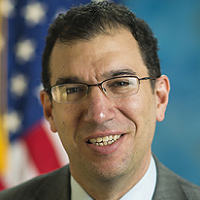 By Andy Slavitt/Acting Administrator, CMS , and
By Andy Slavitt/Acting Administrator, CMS , and
Karen B. DeSalvo, M.D., M.P.H., M.Sc.
The great promise of technology is to bring information to our fingertips, connect us to one another, improve our productivity, and create a platform for the next generation of innovations. Technology, when widely distributed and available, enables providers to improve patient care by distributing information and best practices and leading to better experiences of care for individuals in the health care system. And technology can make a significant difference in the rapidly modernizing Medicaid program.
Connecting All Parts of the Health System
That’s why we are announcing an initiative to bring interoperable technology to a broader universe of health care providers, including long-term care, behavioral health providers, substance abuse treatment centers, and other providers that have been slower to adopt technology. This announcement will help to bridge an information sharing gap in Medicaid by permitting states to request the 90 percent enhanced matching funds from CMS to connect a broader variety of Medicaid providers to a health information exchange than those providers who are eligible for such connections today. This additional funding will enhance the sustainability of health information exchanges and lead to increased connectivity among Medicaid providers.
Doctors and other clinicians need access to the right information at the right time in a manner they can use to make decisions that impact their patient’s health. The free flow of information is hampered when not all doctors, facilities or other practice areas are able to make a complete circuit. Adding long-term care providers, behavioral health providers, and substance abuse treatment providers, for example, to statewide health information exchange systems will enable seamless sharing of a patients’ health information between doctors or other clinicians when it’s needed. This sharing helps create a more complete care team to collaborate on the best treatment plans and goals for Medicaid patients.
Modernizing Medicaid
This announcement is another example of how Medicaid is leading change for its beneficiaries and throughout the health care system. But this is more than a technology initiative. It is part of a comprehensive effort to make sure that the 72 million adults, children, seniors and people with disabilities served by the Medicaid program have access to high quality, coordinated care. Improving population health and addressing the needs of complex populations requires strong health information technology tools.
The benefits are tangible – from care coordination to medication reconciliation to public health reporting. Exchanging care information can support patients with multiple chronic conditions as they navigate specialists, hospitals, primary care, home health care, and pharmacies. Medication reconciliation for children in the foster care system avoids duplicative or missed treatments. And, public health reporting sounds the warning bell on potential public health disasters and improves the use of preventive measures, such as immunizations. This investment should also speed the adoption of alternative payment models that focus on the quality rather than the quantity of care provided. As the Medicaid program moves towards paying for quality, technology infrastructure and information exchange is needed for better care coordination.
CMS and ONC look forward to partnering with and supporting states in these and other critical efforts to modernize and connect the Medicaid program for the millions of beneficiaries they serve.
This post was originally published on the Health IT Buzz and is syndicated here with permission.
